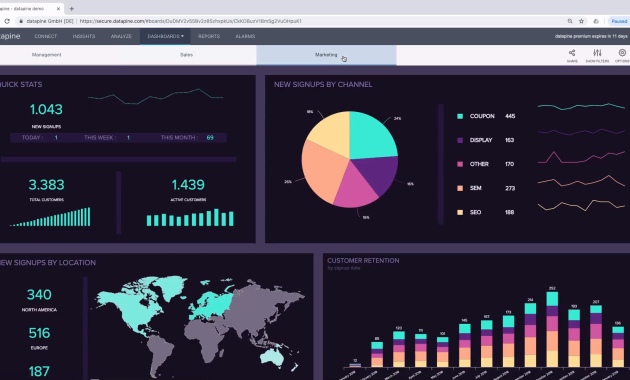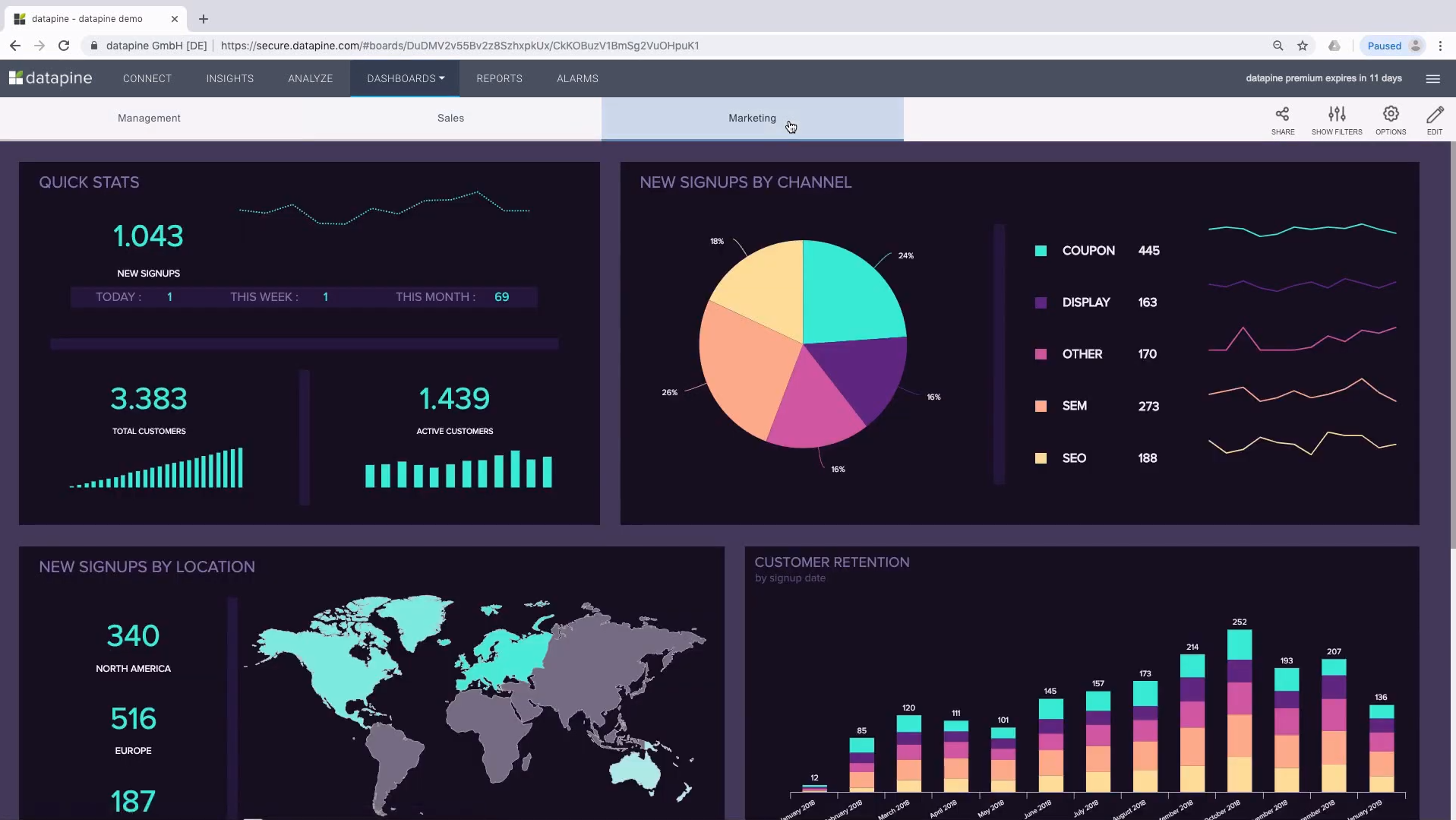
Expert Tips on Business Intelligence Software That Converts: A Guide to Driving Actionable Insights
In today’s data-driven world, businesses are drowning in information. The challenge isn’t just collecting data; it’s transforming it into actionable insights that drive growth and profitability. This is where Business Intelligence (BI) software steps in. But with a plethora of options available, choosing the right BI tool and leveraging it effectively can be a daunting task. This article provides expert tips on Business Intelligence software that converts, focusing on strategies to select, implement, and utilize these powerful tools to achieve tangible results. We’ll explore proven methods to ensure your BI investment yields a high return, turning data into a strategic advantage.
Understanding the Power of Business Intelligence Software
Business Intelligence software is more than just a reporting tool. It’s a strategic asset that empowers organizations to make informed decisions. It collects, processes, and analyzes data from various sources, providing a comprehensive view of business performance. This allows for identification of trends, patterns, and anomalies that might otherwise go unnoticed. The ultimate goal is to convert raw data into actionable insights that lead to improved decision-making, increased efficiency, and enhanced profitability. Successful use of Business Intelligence software relies on a clear understanding of business goals and the ability to translate those goals into measurable metrics.
Choosing the Right Business Intelligence Software: Key Considerations
Selecting the appropriate BI software is critical for success. The right tool should align with your specific business needs and technical capabilities. Consider these key factors:
- Data Sources: Identify all the data sources your business uses. Ensure the software integrates seamlessly with these sources, including databases, CRM systems, and marketing platforms.
- Scalability: Choose a solution that can grow with your business. It should be able to handle increasing data volumes and user demands.
- User-Friendliness: The software should be intuitive and easy to use, even for non-technical users. Look for features like drag-and-drop interfaces and pre-built dashboards.
- Reporting and Analytics Capabilities: Evaluate the software’s ability to generate the reports and analyses you need. Consider features like data visualization, ad-hoc reporting, and predictive analytics.
- Integration: Ensure the software integrates with other tools your business uses. This will streamline workflows and improve data accessibility.
- Cost: Compare pricing models and consider the total cost of ownership, including implementation, training, and ongoing maintenance.
- Security: Prioritize security features to protect sensitive data. Look for features like data encryption and access controls.
Careful evaluation of these factors will help you select Business Intelligence software that aligns with your strategic objectives. The right choice is not always the most expensive; it’s the one that best meets your specific needs.
Implementing Business Intelligence Software: A Step-by-Step Guide
Implementing BI software requires a well-defined plan to ensure a successful rollout. Here’s a step-by-step guide:
- Define Your Objectives: Clearly outline the business goals you want to achieve with the software. What questions do you want to answer? What key performance indicators (KPIs) will you track?
- Data Preparation: Clean and prepare your data. This includes removing duplicates, correcting errors, and ensuring data consistency.
- Software Installation and Configuration: Install and configure the software according to your specific needs. This may involve connecting to data sources and setting up user permissions.
- Dashboard and Report Design: Design dashboards and reports that provide the insights you need. Focus on clear, concise visualizations that are easy to understand.
- User Training: Train your users on how to use the software. Provide documentation and support to ensure they can effectively leverage its features.
- Pilot Testing: Conduct pilot testing with a small group of users to identify and address any issues before a full rollout.
- Deployment and Monitoring: Deploy the software across your organization and monitor its performance. Make adjustments as needed to optimize its effectiveness.
A well-executed implementation plan is crucial for maximizing the value of your Business Intelligence software investment. It ensures that you extract the most valuable insights from your data.
Maximizing the Impact: Expert Tips for Converting Insights into Action
Once your Business Intelligence software is up and running, the real work begins: turning insights into action. Here are expert tips to convert data into meaningful actions:
- Focus on Actionable Metrics: Track KPIs that directly impact your business goals. Avoid overwhelming users with too much data.
- Data Visualization: Use clear and compelling visualizations to communicate insights effectively. Charts and graphs make it easier to understand complex data.
- Regular Reporting: Establish a regular reporting schedule to track progress and identify trends.
- Automated Alerts: Set up automated alerts to notify users of significant changes or anomalies in the data.
- Cross-Functional Collaboration: Encourage collaboration between different departments. This allows for a more holistic view of the business and facilitates better decision-making.
- Continuous Improvement: Regularly review your dashboards and reports. Make adjustments as needed to ensure they remain relevant and effective.
- Data-Driven Decision Making: Foster a culture of data-driven decision making. Encourage employees to use data to support their decisions.
- Training and Support: Provide ongoing training and support to users. This ensures they can effectively use the software and extract the most value from it.
By implementing these strategies, you can transform your Business Intelligence software into a powerful tool for driving action and achieving business success. Remember that the best Business Intelligence software is the one that helps you make better decisions.
Advanced Techniques: Leveraging Advanced Features
Beyond the basics, explore advanced features to maximize your software’s potential:
- Predictive Analytics: Use predictive analytics to forecast future trends and make proactive decisions.
- Data Mining: Use data mining techniques to discover hidden patterns and relationships in your data.
- Natural Language Processing (NLP): Utilize NLP to enable users to ask questions in plain language and receive insights.
- Integration with AI: Explore integrations with AI to automate tasks and improve decision-making.
These advanced techniques can provide a significant competitive advantage. They enable businesses to anticipate future trends and make proactive decisions.
Case Studies: Real-World Examples of Success
To illustrate the power of Business Intelligence software, let’s examine some real-world examples:
Retail: A major retailer used BI software to analyze sales data and identify underperforming product lines. They then adjusted their inventory and marketing strategies, leading to a 15% increase in sales within six months.
Healthcare: A hospital implemented BI software to track patient outcomes and identify areas for improvement. This resulted in a 10% reduction in readmission rates and improved patient satisfaction.
Manufacturing: A manufacturing company used BI software to optimize its production processes. This led to a 20% reduction in waste and a 10% increase in overall efficiency.
These case studies demonstrate the tangible benefits of Business Intelligence software. They highlight the importance of data-driven decision making across industries.
Common Pitfalls to Avoid
While Business Intelligence software offers immense potential, several pitfalls can hinder its success. Be aware of these common mistakes:
- Poor Data Quality: Ensure data accuracy. Inaccurate data leads to flawed insights.
- Lack of User Training: Proper training empowers users to leverage the software effectively.
- Ignoring Business Goals: Align your BI efforts with your strategic objectives.
- Overcomplicating Reports: Keep reports clear and concise. Overwhelming users with too much information is counterproductive.
- Lack of Executive Support: Secure buy-in from leadership. Executive support is crucial for successful implementation.
- Choosing the Wrong Software: Select software that meets your unique needs. Avoid a one-size-fits-all approach.
- Not Monitoring and Adjusting: Continuously monitor the performance of your BI system. Make adjustments as needed to optimize its effectiveness.
Avoiding these pitfalls will significantly increase your chances of achieving success with your Business Intelligence software investment. Careful planning and execution are key.
The Future of Business Intelligence Software
The future of Business Intelligence software is bright. We can expect to see:
- Increased Use of AI: AI will play an increasingly important role in automating tasks and providing advanced insights.
- More User-Friendly Interfaces: Software will become even more intuitive and easy to use.
- Greater Integration: BI software will integrate seamlessly with other business tools.
- Mobile BI: Access to insights on the go will become increasingly important.
- Democratization of Data: More employees will have access to data and the tools to analyze it.
The ongoing evolution of Business Intelligence software promises to transform how businesses operate. Companies adopting these advanced tools will gain a significant competitive edge. Staying informed about the latest trends is crucial.
Conclusion: Harnessing the Power of Data
Business Intelligence software is a transformative tool. It empowers businesses to make data-driven decisions. By carefully selecting and implementing the right software, businesses can unlock valuable insights. They can drive growth and achieve greater success. Remember to focus on actionable metrics, clear visualizations, and continuous improvement. Embrace the power of data, and you will be well on your way to achieving your business goals. Expert tips on Business Intelligence software that converts can help you achieve lasting success. [See also: Related Article Titles] are available to further your knowledge.

